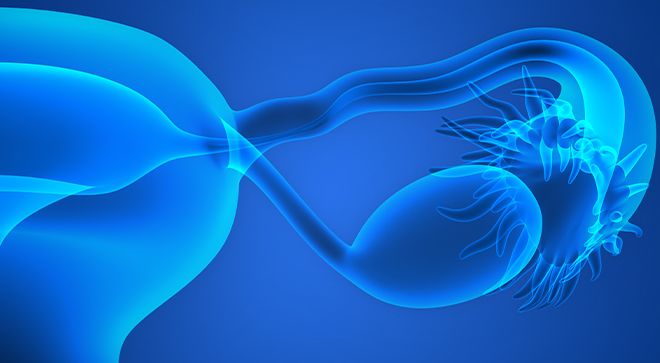Article
BRCA Mutations Associated With Longer Survival in Ovarian Cancer
Author(s):
According to an analysis of the phase 3 GOG-0218 trial, patients who had ovarian cancer and mutations in homologous recombination (HR) genes showed improved survival rates when compared to patients without the mutations.
In a mutational analysis of the phase 3 GIG 218 study, patients who had ovarian cancer and mutations in homologous recombination (HR) genes showed improved survival rates when compared to patients without the mutations.
In the primary GOG 218 analysis, add-on Avastin (bevacizumab) followed by maintenance Avastin improved progression-free survival (PFS) by 3.8 months versus chemotherapy alone in the frontline setting for patients with stage 3/4 ovarian cancer.
The analysis, which was presented at the 2016 Society of Gynecologic Oncology (SGO) Annual Meeting, showed that among patients with BRCA1, BRCA2, and non-BRCA HR mutations, respectively, the reduction in the risk of death, regardless of the treatment received, was 26 percent, 64 percent and 33 percent, compared with patients without HR mutations. The risk of disease progression was decreased by 20 percent, 48 percent and 27 percent, respectively. The findings also demonstrated that HR mutations did not mitigate the benefit of adding Avastin to standard care.
"All three mutation-carrier groups had significantly better progression-free and overall survival when compared to those with no mutations," said lead author Barbara S. Norquist, a gynecologic oncologist at the University of Washington, who presented the results at the meeting.
The double-blind, phase 3 GOG-0218 trial included 1,873 patients with untreated stage 3/4 ovarian cancer who had undergone debulking surgery. There were 625 patients randomized to carboplatin (AUC 6) and Abraxane (paclitaxel) (175 mg/m2) with placebo, 625 patients with Avastin-initiation from cycle two through seven, or Avastin-continuation starting at cycle two and continuing throughout the study in 623 patients. Avastin was administered at 15 mg/kg every three weeks.
Using the BROCA-HR assay, Norquist et al sequenced germline and/or somatic DNA from 1,195 women (63.8 percent) who participated in GOG 218. Among this subgroup, 1,048 women were non-Hispanic White, 971 had grade 2/3 serous disease, and 401 were treated in the Avastin -continuation arm.
HR defects were defined as damaging mutations in BRCA1, BRCA2, BRIP1, PALB2, RAD51D,RAD51C, ATM, SLX4, NBN, BLM, BARD1,CHEK2, MRE11A, RBBP8, XRCC2, and ATR. The researchers identified germline or somatic BRCA1, BRCA2, or non-BRCA HR mutations in 148 patients (12.4 percent), 78 patients (6.5 percent) and 81 patients (6.8 percent), of patients, respectively. No HR mutations were detected in 888 patients, which was 74.3 percent of the population.
For the most part, histology was not predictive of mutation status; however, 46 patients with low-grade serous carcinoma had a significantly lower mutation rate of 10.9 percent versus 27 percent in patients with high-grade serous histology.
In the primary GOG-0218 analysis, the median PFS with Avastin-continuation was 14.1 months compared with 10.3 months with chemotherapy alone. The Avastin -initiation arm did not demonstrate a statistical difference compared with placebo. A significant difference in overall survival (OS) was not observed between the arms.
Using proportional hazard models, Norquist et al estimated the hazard ratios for OS and PFS for the HR mutation subgroups versus the non-mutation population. The models adjusted for treatment, stage, residual disease and performance status.
The median OS was 55.3 months, 75.2 months, and 56.0 months in the BRCA1, BRCA2, and non-BRCA HR mutation subgroups, respectively, compared with 42.1 months in the group without HR mutations.
The median PFS was 15.7 months, 21.6 months, and 16.0 months in the BRCA1, BRCA2, and non-BRCA HR mutation subgroups, respectively, compared with 12.6 months in the group without HR mutations.
When combining the three groups of patients with HR mutations and comparing them with the non-HR mutation population, Avastin provided a similar improvement in PFS, regardless of mutation status.
In the non-HR mutation group, the median PFS was 15.7 months in the Avastin -continuation arm, versus 10.6 months with chemotherapy alone, representing a 5.1-month PFS benefit.
Among the combined group of patients with HR mutations, the median PFS was 19.6 months in the Avastin -continuation arm with 120 patients versus 15.4 months with chemotherapy alone in 108 patients, representing a 4.2-month PFS benefit.
Norquist said a test of interaction confirms that mutation status did not significantly modify the effect of extended Avastin on PFS.
Summarizing the findings she presented, Norquist remarked, "This is important prognostic information for patients and highlights the importance of knowing genetic status in clinical trials in ovarian cancer."References:1. Norquist BS, Brady MF, Harrell MI, et al. Mutations in homologous recombination genes and response to treatment in GOG 218: an NRG Oncology study. Presented at: 2016 SGO Annual Meeting. March 19-22, 2016. San Diego, CA. Abstract 1. 2. Burger RA, Brady MF, Bookman MA, et al. Incorporation of bevacizumab in the primary treatment of ovarian cancer. N Engl J Med. 2011; 365:2473-2483.





